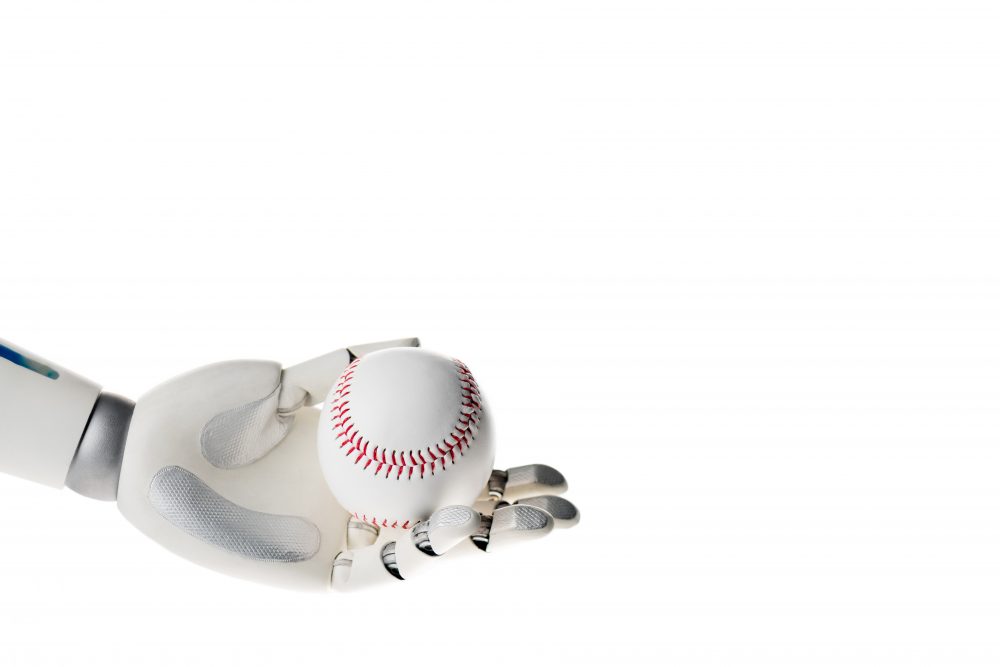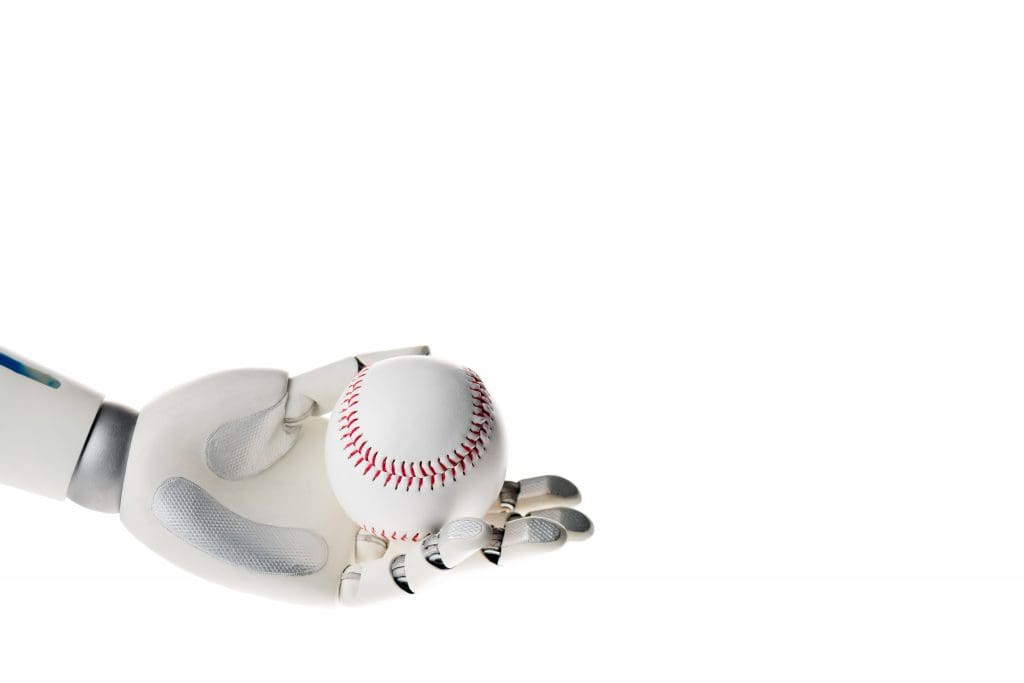The Motus Throw compression sleeve can’t stop pitchers from giving up home runs at a record-setting pace—but it could soon make pitching coaches obsolete thanks to its ability to tell the hurlers when it’s time to call to the bullpen for a reliever. [related]
Hey, maybe if robot umpires find their way into Major League Baseball, the men who used to call balls and strikes and determine if base runners are safe or out can hang out with pitching coaches as the increasingly technology-driven sport finds its games dragging on way too long.
Back to the Motus Throw: Motus Global introduced baseball’s first wearable device in 2015, equipping the sleeve with a sensor that tracks the motion of a pitcher’s arm. Motus also developed an iOS app and Web-based dashboard to present analytics to players and coaches.
MLB approved the technology for use on the field during games and about a dozen teams used the technology for training and rehab programs in 2019.
The Motus sensor uses a three-axis gyroscope and a three-axis accelerometer, taking measurements 1,000 times per second.
While the system is always sampling, it records the information permanently only when it detects the movement signature of a pitch.
Then it files away the stream of data beginning 4 seconds before the pitch and ending 1 second after.
The sensor, which weighs 6.9 grams and measures 9 millimeters thick, causes no discernible changes in pitchers’ movement patterns, according to Motus Global.
Motus Throw Making MLB Inroads
This summer, Motus released an app update to provide information about fatigue.
Pitchers can now identify excess overload within a matter of hours—feedback that they can use to learn safe limits for their bodies and to determine when extra rest and recovery are needed.
MLB rules allow players to wear the Motus Throw during games so that the device can collect data, but pitchers and coaches are not permitted to download that data or access it during a game; only afterward can they look at the analytics.
If a coach could track a player’s fatigue units during a game, maybe he could visit the mound at a moment when the pitcher really needs a few minutes to recover his strength. A coach would also have an objective measure of when a pitcher has reached his limit and should be taken out.
But how well can the Motus Throw predict when a Boston Red Sox pitcher will serve up another homer in a critical situation? Can it account for the ineptitude of the reliever and his unrelenting desire to cough up the lead as quickly as possible?
If so, there’s an opening at 4 Jersey Street in Boston for the 2020 season. With Red Sox ticket prices slated to go up as their payroll goes down, they need all the help they can get.





